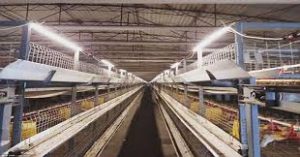Introduction: Probably the most widely used type of LED lighting, flexible strip lights have taken over a large part of the home and commercial market with their ease of use and wide range in applications. From serious architectural features to small home repairs, these strips provide unrivaled adaptability. This insight takes a closer look at how manufacturers have designed these strips to satisfy many different installation requirements, using their physical flexibility, diverse applications and customization capabilities as focal points.
Functional Flexibility and Strength
LED strip light manufacturers focus on physical flexibility for adapting to design alternatives Most of these strips can work during a 90-degree bend without doing any harm to the LEDs or the circuit itself. That is made possible by the use of thin, high-quality PCB (Printed Circuit Board) material-from 2mm in width up to around 4mm-allowing these strips to be easily crammed into tight spaces and bend smoothly along corners.
In addition to also being how LEDs are encapsulated, the material used in this process-typically silicone or epoxy-as well as both its chemical and mechanical properties have significant influence over factors like flexibility and toughness. This material not only shields the LEDs from moisture and dust, it helps the strip to survive frequent bending and manipulation as you mold it during installation. This means, for example, a well-designed flexible LED strip might have an upgraded silicone encapsulation which makes it much more durable than before that will allow the outdoor use to expand longer due to its flexibility let even at -20C.
Versatility in Applications
In terms of use case scenarios, the versatility that these LED strips have to offer goes beyond their physical features. Among them, flexible LED strip lights are common not only in residential space but also widely used in commercial setting. Use them under a cabinet for task lighting, on stairs for safety lights or behind monitors and TVs as ambient backlighting. Their small sizes can usually be suckered to cut at marked intervals, normally every 5 or 10 cm; they may also come equipped with standard measures for length adjustment without the need of special tools.

Customization Capabilities
Manufacturers of Flexible LED Strip Lights Manufacturer have a variety of customization options to meet the requirements and demands that are very precise from customers. Such include color of light choice, levels/magnitudes of brightness and varying degrees CRI criteria. LED strips range from warm white (approx 2700K) to daylight (6500K), with some also featuring RGB( Red, Green Blue ) or even RGBW/RGBWW for colour changing effects.
Brightliness levels also is a very important customization area. Manufacturers supply LED strips in different lumens per meters depending on the intended application; it could be used directly to light a space, indirect lighting for those who like more discrete illumination and even RGB strip! An indoor LED strip could supply 300 lumens per meter, where some commercial-grade models also offer out perform ace >1000 lumen/m typically used for primary lighting methods.
Ability to Change with Technology Progressions
As technology is advancing so does the purpose of LED strips. Now with Smart Technology - A common feature that is available from many of the manufactures producing flexible LED strip lights today. The more advanced strips can also be Wi-Fi or Bluetooth-enabled, offering features such as being able to control light effects, dim the brightness and change colour via a smartphone app at home voice assistant.
LED strip lights are bendable to the point that they can be twisted into any corner imaginable from quality producers, and also having capacity for different applications and customization. Manufacturers respond to technological trends with even more innovations, helping decorative and architectural lighting solutions maintain their leading status as the top choice for any type of architect or designer who wishes to combine elegance & functionality.